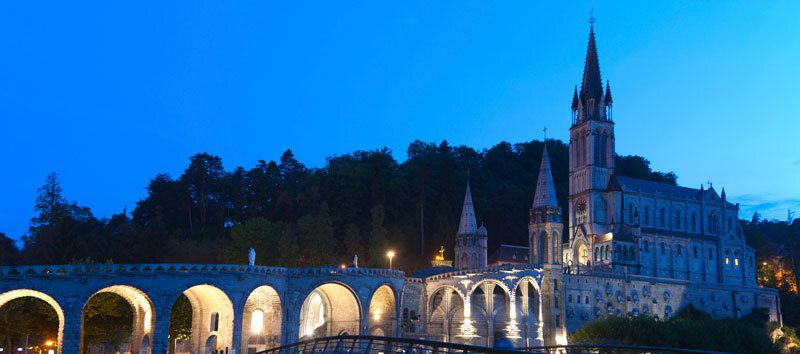Written by Alex, a friend of Aglow Pilgrimages
What is ‘pilgrimage’?
Pilgrimage is a word that many people are familiar with. In fact, the word brings up lots of different images. We may picture the pilgrimage that Chaucer describes in his Canterbury Tales, or scenes of Muslims praying at Mecca. Maybe we think of the old church hymn “To Be a Pilgrim,” and then maybe we proceed to roll our eyes because the song is the very substance of our childhood. But the one thing a lot of people probably won’t picture is themselves on pilgrimage.
Aglow Pilgrims in the Holy Land
Pilgrimage is not a new concept. If anything, people would probably say that pilgrimage is something reserved for those who are very religious or very old do. But the reality is that pilgrimage is something deeply engrained in the history of man. It represents mankind’s unrelenting search for God. For thousands of years people have been embarking on pilgrimage, and even today, men and women all over the world go on them looking for conversion, encounter, wisdom, truth, love.
People make pilgrimage whether they realise it or not, whether they know God or not. People are going out into the world looking to experience something personal and spiritual and they go to every corner of the globe from China to Ethiopia to Bali looking for it.
So what is pilgrimage exactly? In its simplest form, a pilgrimage is often defined as a journey to a sacred place. It is an extensive search, and an excursion with a votive purpose. Pilgrimage is a desire to encounter the divine and to step outside of familiar country in search of something profoundly transformative. That’s pilgrimage in its simplest form. And in it’s complex form, it is something we are experiencing and living every day of our lives.
Biblical Significance of Pilgrimage
The Bible doesn’t specifically mention much about pilgrimage because the simple definition of it didn’t become a defined concept until the first few hundred years of Christianity. Even though there’s no mention of pilgrimage though, there are many mentions of journeys and places. After all, the Israelites were nomads, and they spent a lot of time moving from place to place looking for the Promised Land.
In the Bible, location and journey play an important role in creating a context for the truths that God reveals. The nature of a place and the process of getting there can often reflect what is happening interiorly. And pilgrimage works in the same way.
Let’s take a place like “the mountains,” for example. In many stories of the Old Testament, people like Abraham and Moses climb up a mountain in order to speak to God. In the Bible, Isaiah 2:3 says,
“Many peoples shall come and say:
‘Come, let us go up to the LORD’s mountain,
to the house of the God of Jacob,
That he may instruct us in his ways,
and we may walk in his paths.”
There’s a reason the Israelites saw the mountain as a place that brought them closer to God. The significance of a mountain shows that God exists in a higher place than us. Up on the mountain, one has a vantage to see everything at once. In a similar vein, God is omnipresent and able to see all at once.
Also, when someone looks up the mountain, there’s a vulnerability and a sense of exposure, much like being in awe in God’s presence. Just as a mountain is far bigger than us, He is far bigger.
Let’s take another example by going back to the journey to the Promised Land. The Israelites spent a lot of time roaming the desert looking for the home that the Lord promised them. This place was a land of vegetation, fruitfulness, and constancy; a place that they could settle down and live in comfort and security. It’s no accident
Early History of Pilgrimage
Following the ministry of Jesus of Nazareth, Christians began to search out places associated with the life of Christ. From the 4th century, we already hear testimonies of people going on pilgrimage, most notably in the Itinerarium Burdigalense, or “Bordeaux Itinerary” written under the alias of “The Pilgrim of Bordeaux.” The document brings to light a journey made in the Holy Land, taking note of places of interest and significant sites.
Another famous account of early pilgrimage comes from a woman named Egeria. Egeria narrates to her readers a series of notes on her journey. She speaks of going to Mount Sinai and staying for 3 years in Jerusalem. She makes a trip to the tomb of Abraham’s brother, Haran, and a trip to St. John’s at Ephesus. In the account known as the Itinerarium Egeriae, she also described the liturgical tradition of the time. Her observances are significant in helping modern pilgrims to understand the history of pilgrimage and its ties with organised prayer and worship.
Famous Pilgrimages
There are thousands of traditional pilgrimage sites around the world, including more than 15 in the United Kingdom. But like we’ve said—pilgrimage is not so much a destination as a spiritual journey. Any person can choose to make a spiritual pilgrimage whether they’re in their neighbourhood, in Europe, or on the other side of the globe. However, at some point, everybody should consider visiting these widely recognised sites of divine apparitions.
Lourdes
Located in the south of France, Lourdes is considered one of the most popular sites of pilgrimage—especially for those seeking healing. The story of Lourdes began in 1858 with a young French peasant girl named Bernadette Soubirous who would come to a grotto on a piece of land near the Gave de Pau river. There, a vision of a young maiden in white wearing a golden rosary, a blue waist belt, and two roses at her feet came to Bernadette. This woman came to Bernadette, calling herself “the Immaculate Conception.” At first, Church officials mocked the young girl, but soon came to recognise the vision as legitimate.
First, only a few locals came to the spring where Bernadette had heard the woman tell her to drink from the water. Soon, the few locals became hundreds of pilgrims coming from far off lands to see for themselves whether there was truth to the stories they were hearing of Lourdes. The land was bought by the bishop and sanctuaries built.
Fatima
Fatima is another major site of Christian pilgrimage located in Portugal. In 1916, three shepherd children in the Portuguese countryside began to see an angel who taught them how to pray. The angel continued to visit the children: Saint Francisco de Jesus Marto, Saint Jacinta de Jesus Marto, and their cousin, Lúcia Santos.
In 1917, the Virgin Mary appeared to the children. The vision of Mary matched previous visions which recalled a woman “more brilliant than the sun.” The Virgin Mary told the children to pray the Rosary every day to end the war. She also revealed to them 3 secrets which are considered apocalyptic visions and prophecies.
Another notable miracle that happened at Fatima is referred to as the Miracle of the Sun. At Cova da Iria in the sight of tens of the thousands of witnesses, the sun began to dance and exude a multitude of colours. Different and contradictory opinions exists on what occurred, but the event was even witnessed by Pope Pius XII from the Vatican Gardens.
In 1928, the first foundation stone was placed for the Sanctuary of Fatima. Belief in the visions of Fatima were approved in 1930. Wards for the sick, chapels, and statues of Our Lady of Fatima were erected in the area in the years following the apparitions. and Today people visit Fatima, as well as Cova da Iria where the Sanctuary of Our Lady of Fatima can be found. Pilgrims pray the rosary regularly to honour the wisdom of the Virgin, and pilgrim festivals take place on the 13th of every month from May to October. A papal indulgence is given to those who make pilgrimage to Fatima.
In 2017, Fatima celebrates 100 years since our Lady of Fatima appeared to Lucia, Jacinta, and Francisco.
Medjugorie
Aglow pilgrims from the 2019 Medjugorje Youth Festival
The apparitions at Medjugorie in Croatia have been a major source of intrigue to Catholic Christians since they began in 1981. The visions started when Mirjana Dragicevic and Ivanković confirmed an apparition of Mary, the mother of Jesus Christ, on the hill.
The miracles of Medjugorje have not been officially recognised as apparitions as they are ongoing, and in order for an apparition to be properly investigated, they must be finished. Regardless of the outcome of any report on Medjugorie, the fruit of what is happening to those who visit this place of pilgrimage is undeniable. Already, the Church has seen conversions, ministries, and orders born of Medjugorie. People describe feeling the intensity of the love of God, and a desire and attraction to give everything to God.






